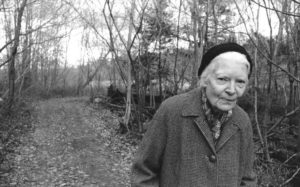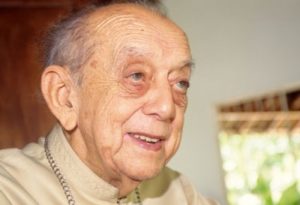“It is God who said, ‘Let light shine out of darkness,’ that has shone into our hearts to enlighten them with the knowledge of God’s glory, the glory on the face of Christ.” – 2 Corinthians 4
Friedrich Nietzsche, the atheistic, “death of God” philosopher, was fond of taunting his Christian friends with: “I’ll believe in your redeemer when you look more redeemed.”
Pope Francis in Evangelii Gaudium makes a similar challenge. He asks, what kind of missionaries are Christians who look like “Lent without Easter” (6), “querulous and disillusioned pessimists, sourpusses” (85), “defeated generals” (96)?
He prays, “May the world of our time, which is searching, sometimes with anguish, sometimes with hope, be enabled to receive the good news not from evangelisers who are dejected, discouraged, impatient or anxious, but from ministers of the Gospel whose lives glow with fervour, who have first received the joy of Christ.” (10)
So, even at a time when the Church has never been more criticised and questioned, it is important that we rediscover our joy in being Christian and share this with our brother and sister Australians of all faiths and no faith.
We may never be a perfect Church, but hopefully we can come across as a more attractive, “redeemed” and servant Church.
For us Catholics, one very good way into understanding what Pope Francis means by ‘the Joy of the Gospel’ is simply to ponder on the faces of those holy people in our own lives who ‘reflect’ the joy of the Lord Jesus.
Why are the faces of holy people so important, not only in iconography but also in Christian experience and memory? Joy is the physical surfacing of the light of God. As the moon reflects the sun, so joy shines in the holy face.
Left to ourselves we shrink inwards, and we can fail see the ‘glory ‘of Christ all around us.’ Joy is waking to reality; joy is salvation from the self. It is our startled response to the call of another.
I have been privileged in my life to have ‘gazed’ on many holy faces; ‘icons’ of the Joy of the Gospel. Three stand out for me. Some little snippets about them follow:
Mum Shirl of Redfern
Coleen Shirley Perry Smith, better known as Mum Shirl. Image: Supplied
This Aboriginal woman who was a saintly advocate for Indigenous people for decades in Redfern.
Fr Ted Kennedy summed her up powerfully at her funeral at St Mary’s Cathedral, Sydney in 1998:
“Christian Hope for her transcended both pessimism and optimism. It called her to expect God to intervene in the face of despair. She woke up each morning expectantly – expecting God to do that. She never had to wait around, because always, always some rejected person would come around the corner who of course was Christ himself. She had had enough of the phoney Christians who try to peddle a poor-free Christ who is in fact a phoney Christ, not Christ at all. Mum Shirl was, I think, the greatest theologian I have ever known. As a mystical or spiritual theologian, she could beat the socks off Hildegarde of Bingen or Julian of Norwich. She once said, ‘If you can’t find anyone to hang on the Cross between two thieves, I will.’”
Dorothy Day

Dorothy Day. Image: Supplied
As a teenager in 1971 in Fitzroy, I listened with my father to Dorothy Day, the Catholic social justice activist who founded the Catholic Worker movement. I love the story Robert Ellsberg recounts about her:
“One day I applied under the Freedom of Information Act for a copy of the voluminous F.B.I. file that documented efforts over several decades to comprehend just what category of subversion the Catholic Worker was supposed to represent. Apparently at one time Dorothy’s name was placed on a list of dangerous radicals to be detained in the event of a national emergency. What particularly pleased her, however, was a profile that J. Edgar Hoover had composed: ‘Dorothy Day is a very erratic and irresponsible person who makes every effort to castigate the Bureau whenever she feels inclined.’ ‘That’s marvellous!’ she said. ‘Read it again!’”
Dom Helder Camara

Dom Helder Camara. Image: Supplied
Dom Helder visited Australia in May 1985. The saintly Brazilian pastor and prophet of the poor made a remarkable impact on all who met him. The joy of Christ literally shone through his face. A Melbourne Sun Herald journalist was moved to write this after meeting him at Sacred Heart Primary School Fitzroy:
“A stooped and tiny man, barely 1.5 metres high, but somehow a giant in stature. A wizened and ancient betel-nut-brown face from which gentle eyes shone a special kind of light….unashamed tears of hope and joy slid down the many wrinkles of Dom Helder Camara’s cheeks.”
As we approach Advent 2021, no doubt you will have your own memories of the faces/icons of Christ’s joy that you have personally encountered on your faith journey.
Let’s remember those holy faces dear to each one of us. May Thomas Merton’s famous vision (as he looked at the people of Louisville passing him in the streets) console us, as we seek ‘the Joy of the Gospel’, in the footsteps of Pope Francis:
“Then it was as if I suddenly saw the secret beauty of their hearts, the depths of their hearts, where neither sin nor desire nor self-knowledge can reach, the core of their reality, the person that each one is in God’s eyes. If only they could all see themselves as they really are. If only we could see each other that way all the time.”
With thanks to Cindy Wooden & Joshua J. McElwee for their great book and its insights A Pope Francis Lexicon, Liturgical Press (2018), which was the genesis of this article.
Br Mark O’Connor FMS is the Vicar for Communications and Head of Communications in the Diocese of Parramatta.
Credit: Source link


